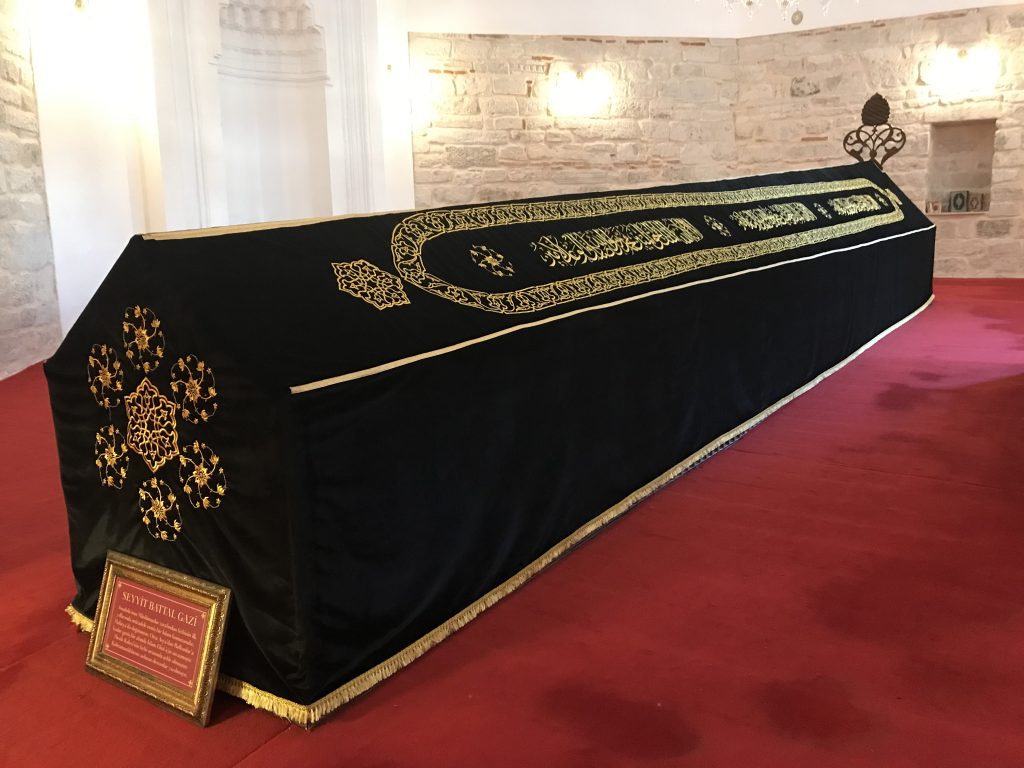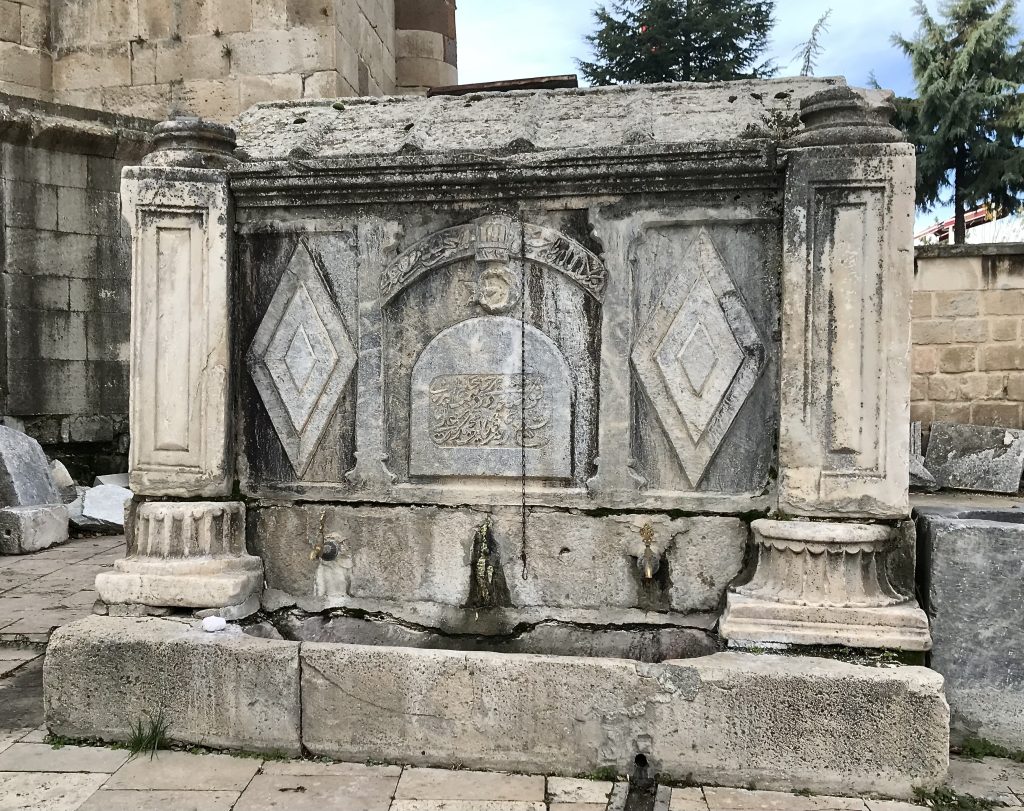Burial place of Battal Gazi Population: 2,200
Old name: Nacolea (Roman), Kala-i Mashihya
Southeast of Eskişehir, Seyitgazi is dominated by the hilltop shrine of Battal Gazi, an early medieval hero who fought for the Arabs against the Byzantines and died c.740. He is buried in a shrine attached to a mosque built in the early Ottoman style familiar from Bursa. Legend tells how Elenora, a Byzantine princess from nearby Akroneos (Afyon), fell in love with him; predictably, on hearing of his death she killed herself whereupon they were buried side by side. At eight metres in length, his tomb is unnaturally long, a feature it shares with those of the Prophet Nuh (Noah) in Cizre and of the Prophet Yuşa (Joshua) on Yuşa Tepesi in İstanbul.
In 1208 the Selçuk sultan Alaeddin Keykubad I’s mother, Ümmühan Hatun, rediscovered their tomb in what was then a Greek monastery dedicated to St Michael the Archangel but was promptly converted into an Islamic shrine. She is buried in what looks like a separate fortified building alongside the shrine to the hero.
In the 14th century Hacı Bektaş Veli established a dervish tekke (lodge) here which was soon attracting worshippers.
Between 1512 and 1517 Sultan Selim II renovated the complex into more or less the form it takes today. The tekke was still flourishing in the 17th century but 19th-century travellers reported it in disarray and the dervishes down to a mere handful although pilgrims continued to visit.
 Today the entire walled complex has been completely restored. It still retains many of the ancillary buildings of a mosque complex including a many-chimneyed aşevi (cookhouse), a semahane (dancefloor for dervishes) and a medrese (seminary) even though the colourful atmosphere of the days of the dervishes and pilgrims is no more. Look around the courtyard and you’ll see many pieces of stone left over from the monastery. An even older sarcophagus has been pressed into service to make a fountain with, right beside it, an old baptismal font presumably taken from the lost monastery. The columns of the portico of the mosque and some of the plinths and capitals in the complex are also reused from older buildings.
Today the entire walled complex has been completely restored. It still retains many of the ancillary buildings of a mosque complex including a many-chimneyed aşevi (cookhouse), a semahane (dancefloor for dervishes) and a medrese (seminary) even though the colourful atmosphere of the days of the dervishes and pilgrims is no more. Look around the courtyard and you’ll see many pieces of stone left over from the monastery. An even older sarcophagus has been pressed into service to make a fountain with, right beside it, an old baptismal font presumably taken from the lost monastery. The columns of the portico of the mosque and some of the plinths and capitals in the complex are also reused from older buildings.
The shrine aside, Seyitgazi makes a good hopping off point for visits to Midas Şehri and the northern parts of the Frig Vadisi although there’s nowhere to stay here.
Transport info
There are regular buses to Seyitgazi from Eskişehir (43km) and you can walk up the hill although it would be a hot and shadeless experience in summer.
Nearby destinations
Han


